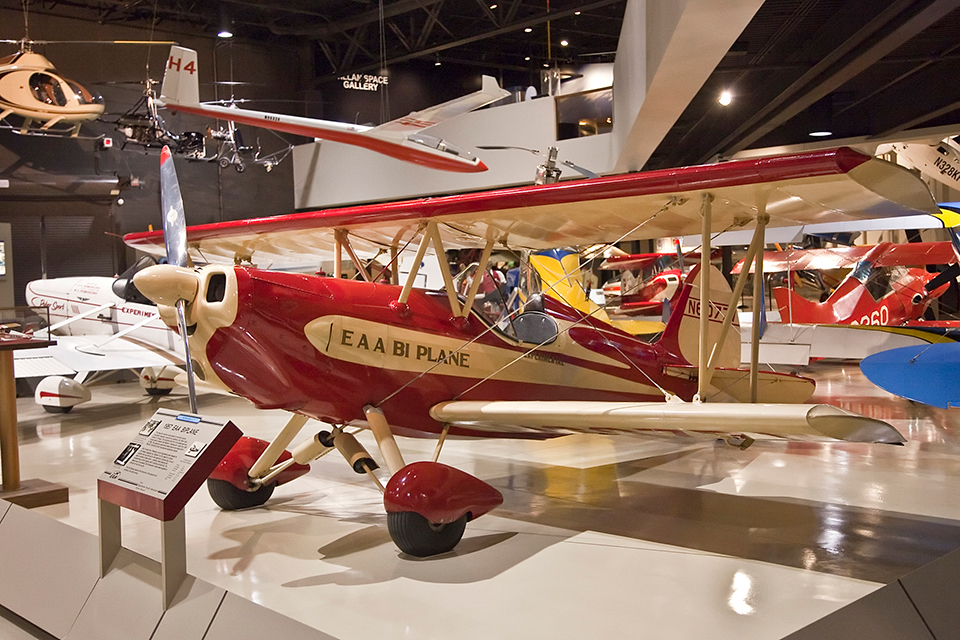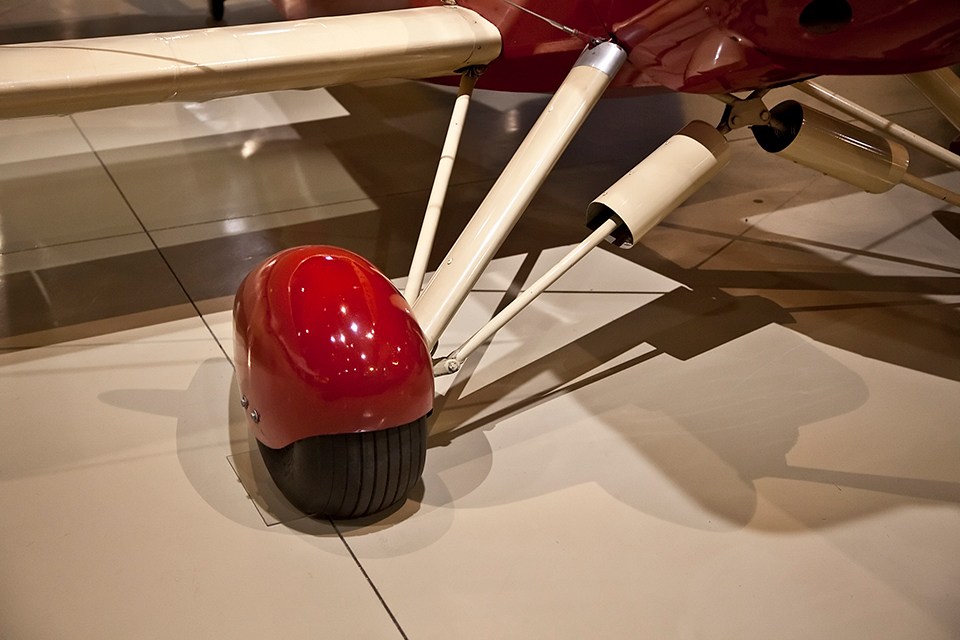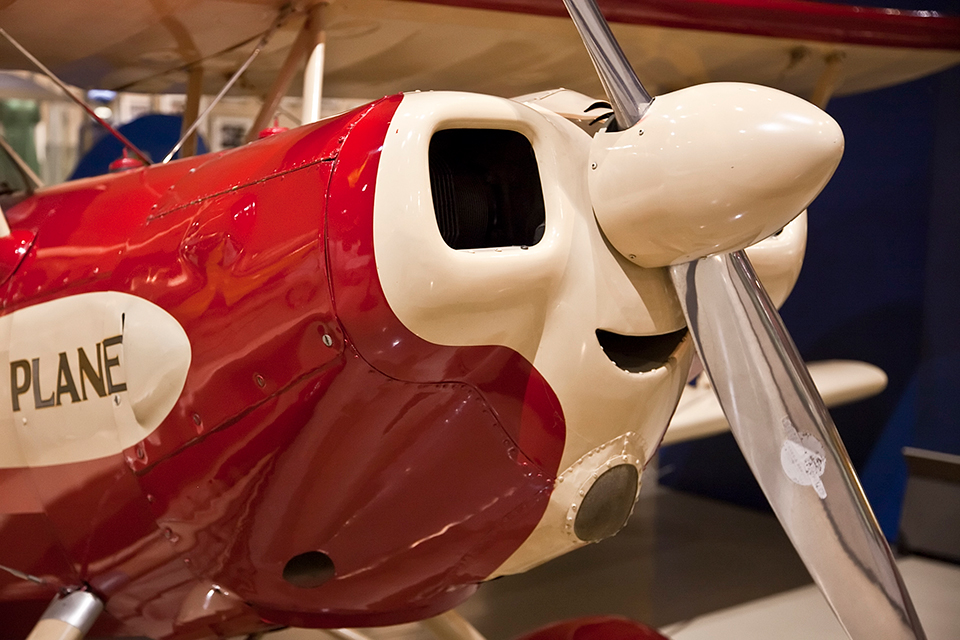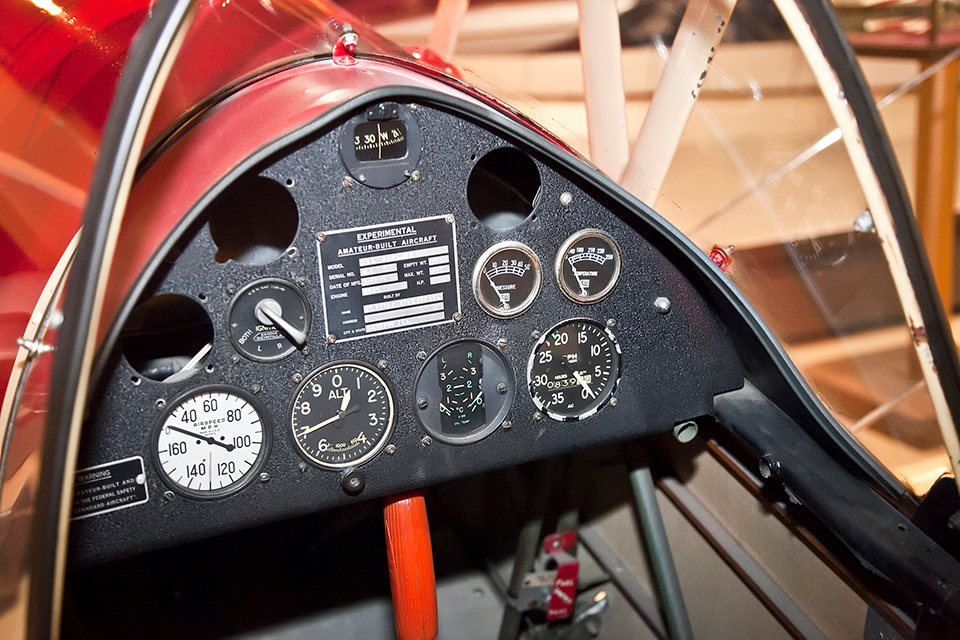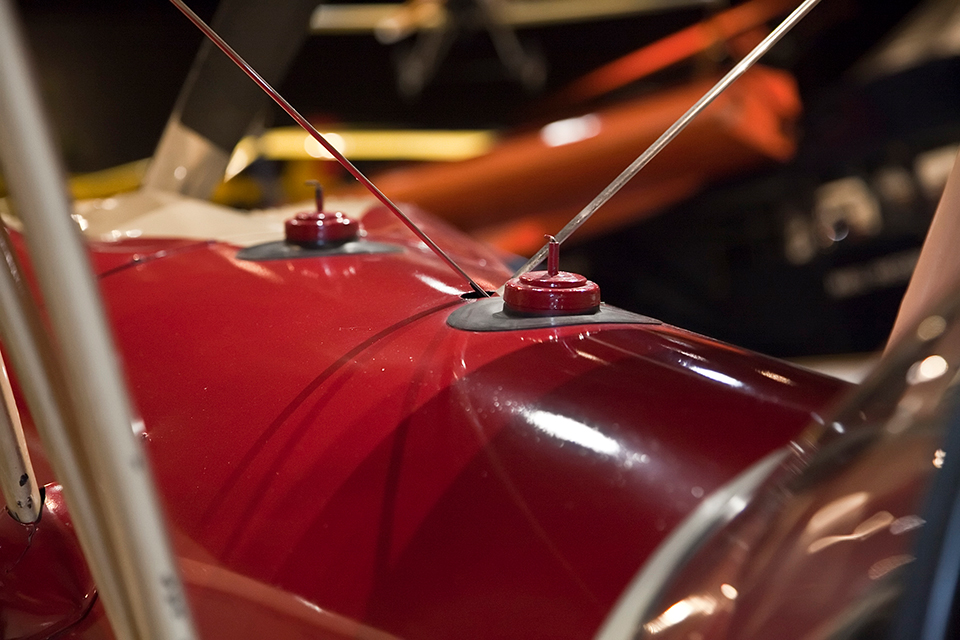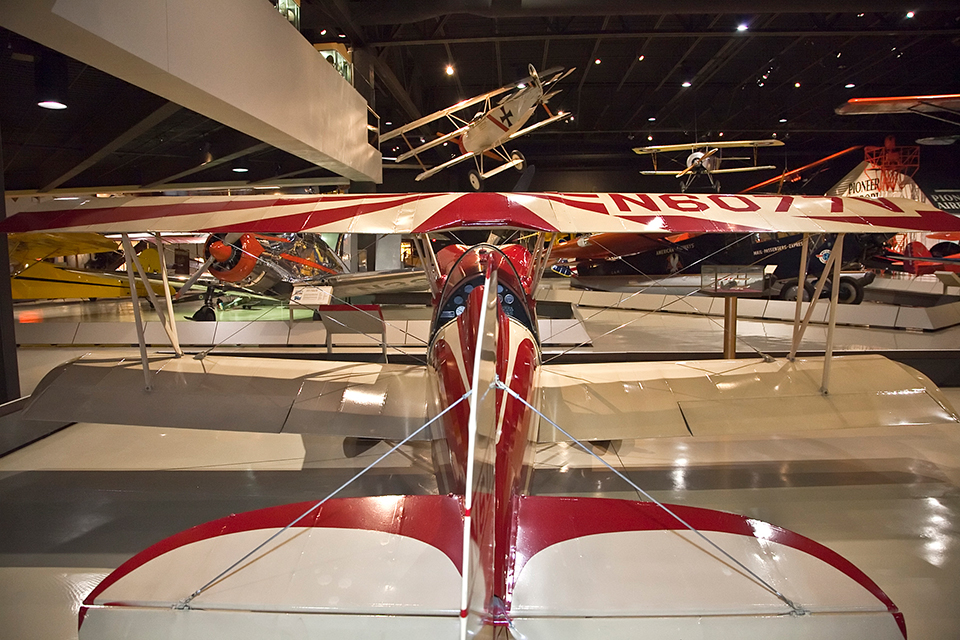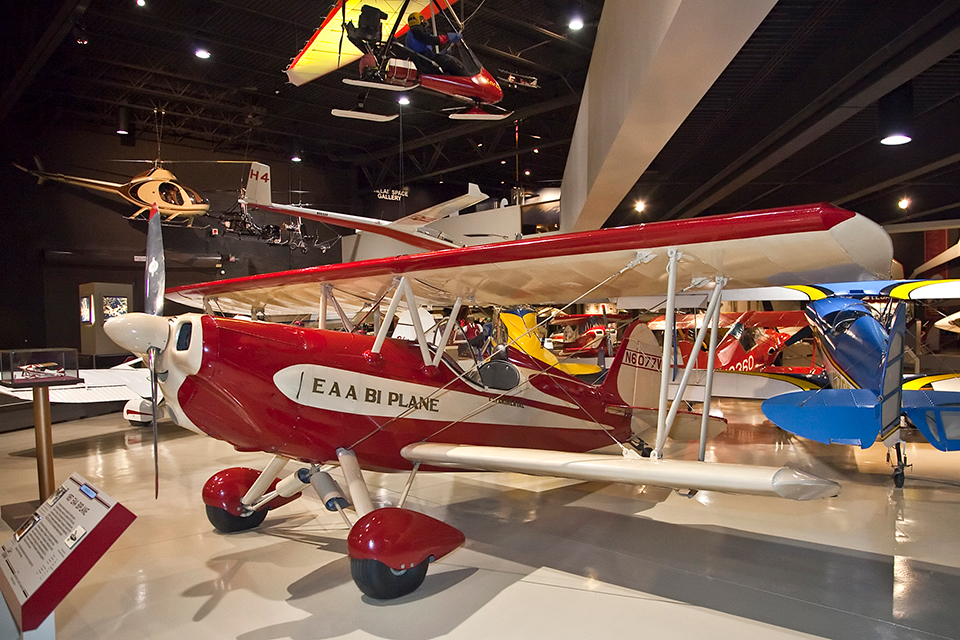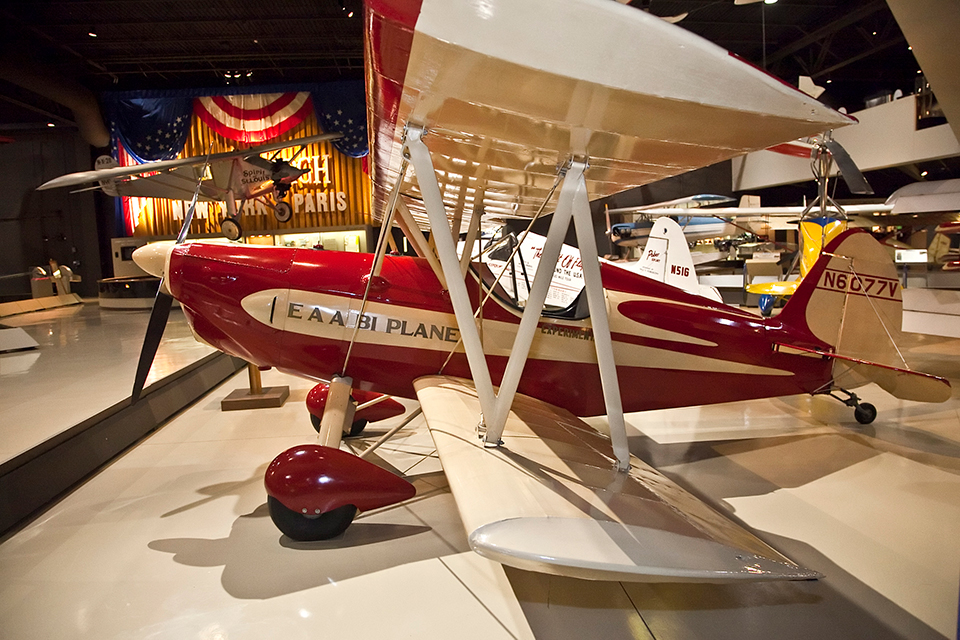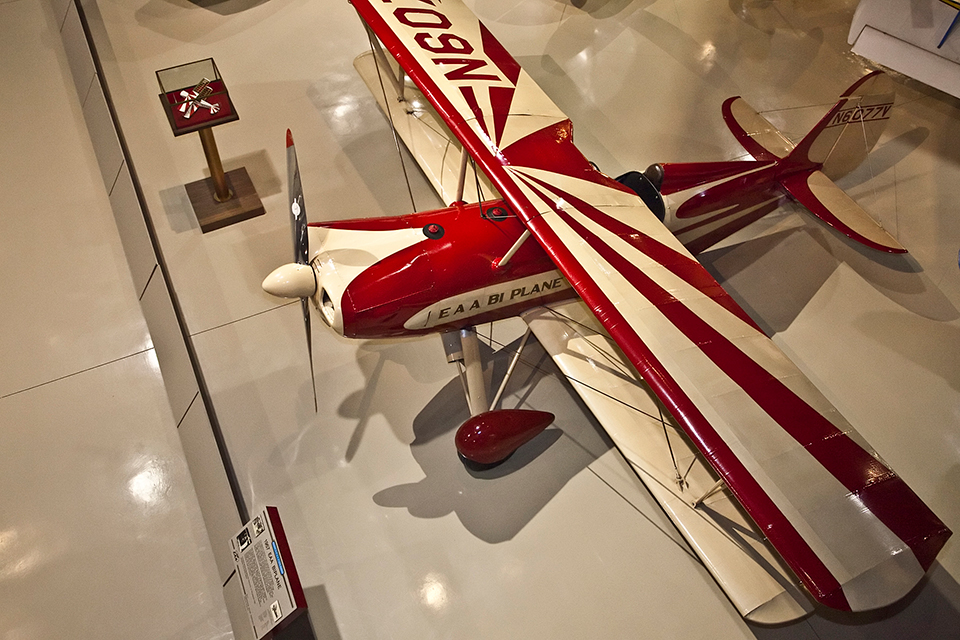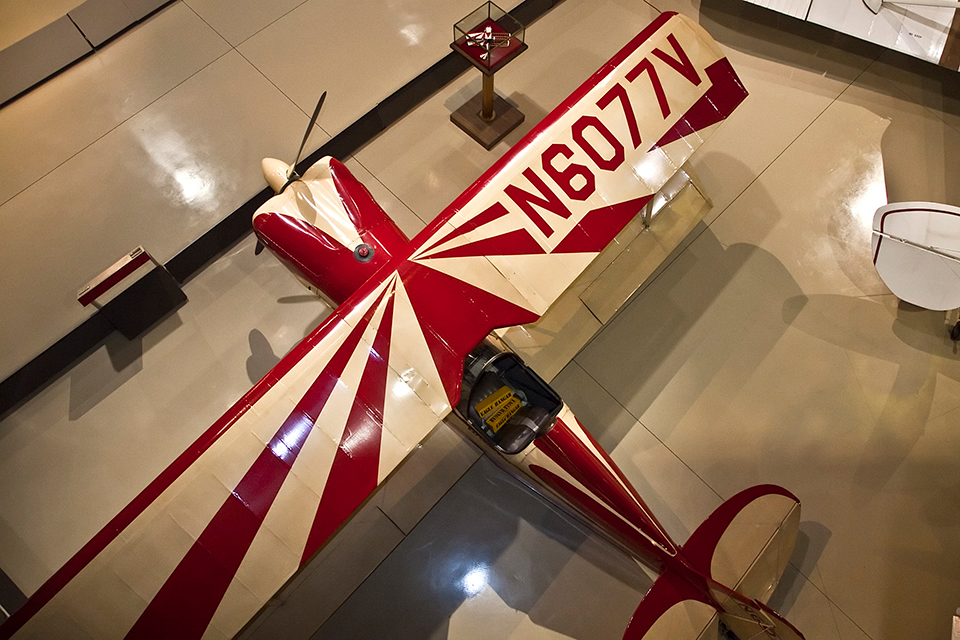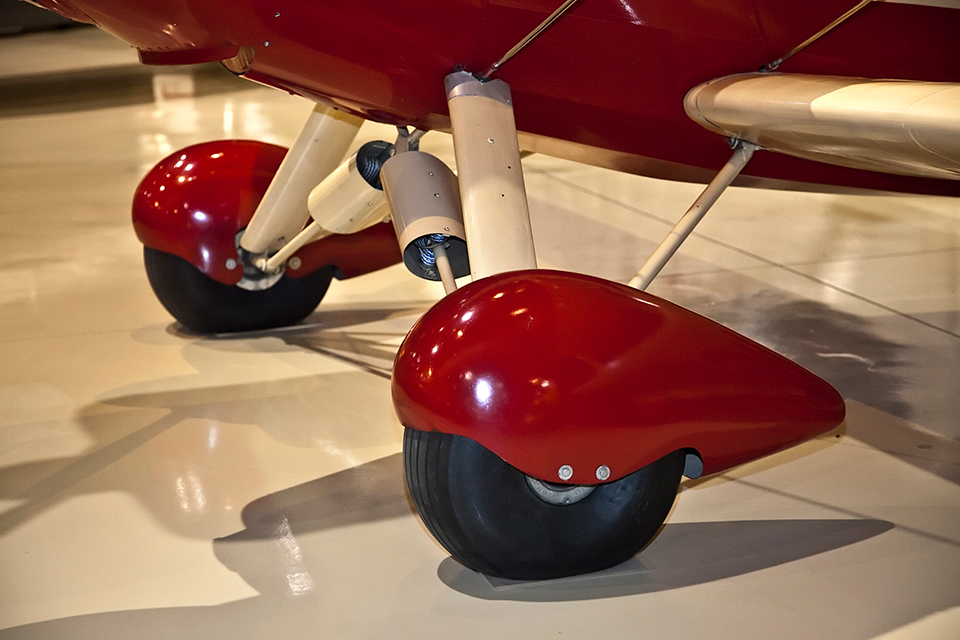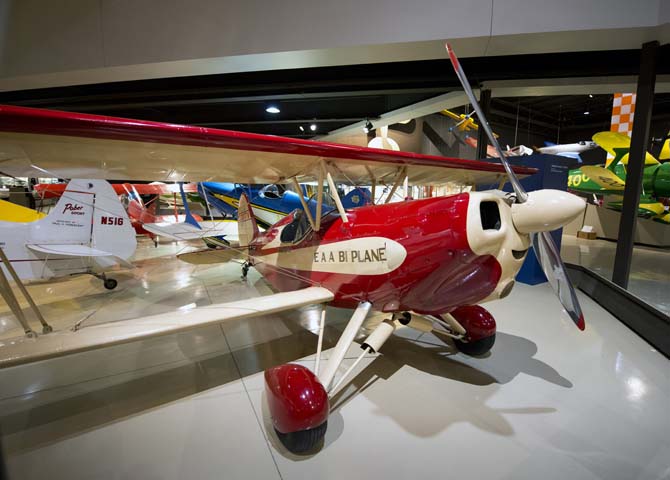1960 EAA Biplane A-1 (P-2) Prototype - N6077V
Location: Homebuilts
The EAA Biplane was one the first original designs published by the Experimental Aircraft Association. A popular and successful design in its own right, the EAA Biplane was also the forerunner of EAA’s popular Acro Sport series of aerobatic homebuilts.
In 1955, EAA founder Paul Poberezny was looking for a new design for a sporty-looking, open cockpit biplane for homebuilders. He turned to EAA member Jim D. Stewart to draw up plans for an easy-to-build biplane that would take advantage of up-to-date materials and methods. At the time, Stewart was an aeronautical engineer at the famed Allison Engine Company in Indianapolis, Indiana.
Stewart and three other Allison engineers agreed to design an airplane and draw a set of plans. Initially, they based their design on the Gere biplane, a popular 1930s-era homebuilt, but soon abandoned that route as impractical and created an entirely new design. It used a welded-tube fuselage and wooden wing, with fabric covering, and was powered by a 65-hp Continental engine.
Robert Blacker, and his students at St. Rita’s High School, in Chicago, Illinois, had just finished construction of a Corben Baby Ace homebuilt airplane as a class project. Blacker and his students agreed to build the EAA Biplane prototype as the focus of Blacker’s high school course in aircraft construction. Work began in 1957 and continued at the school through 1960. The students added their own modifications to streamline the airframe, including an enclosed bubble canopy for the cockpit, a pressure cowling for the engine, and streamlined fairings on the wing and strut fittings.
In its first test flights, in June 1960, the airplane did not perform well, and it was returned to the school for modifications. These included a redesigned horizontal stabilizer and the addition of two degrees of incidence in the upper wing. Further test flights in November were much more successful and with a modified cowling to improve engine cooling and a new metal propeller, the airplane performed pretty much as its designers intended.
The EAA Biplane was then moved to EAA headquarters in Hales Corners, Wisconsin, for more modifications and testing. The bubble canopy was removed and replaced with a turtle deck, headrest, and windscreen, as in the original drawings. Paul and other EAA members suggested other changes to improve the airplane, including a larger 85-hp engine, new instrument panel, smaller cockpit opening, redesigned engine and fuselage cowlings, and the addition of a propeller hub spinner. Several EAA members completed these modifications in time to unveil the completed prototype at the 1961 EAA convention at Rockford, Illinois. The plans for the EAA Biplane were updated and offered for sale for $20 with profits dedicated to the EAA Air Education Museum Building Fund.
A Commitment to Young People
Based in part on the success of Blacker’s aviation class projects, Paul chose the EAA Biplane for a new educational program to be called Project Schoolflight. The goal of the program was to introduce young people to aviation through airplane building projects like those at St. Rita’s High School. Such projects, Paul reasoned, would teach a variety of basic, practical skills in woodworking, metal shaping, welding, aircraft rigging, fabric covering, and painting, while introducing students to aviation hobbies and careers. Many schools and EAA members expressed interest in Project Schoolflight, but only a few class projects were ever undertaken, and the program was discontinued in the late 1980s.
Length: 17 feetWingspan: 20 feet
Height: 6 feet
Empty Weight: 695 pounds
Gross Weight: 1,023 pounds
Crew: 1
Powerplant: Continental C-85
Horsepower: 85 hp
Maximum Speed: 105 mph
Cruise Speed: 90 mph
Range: 200 miles
